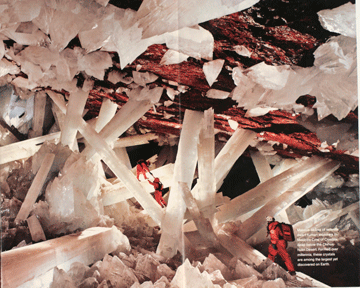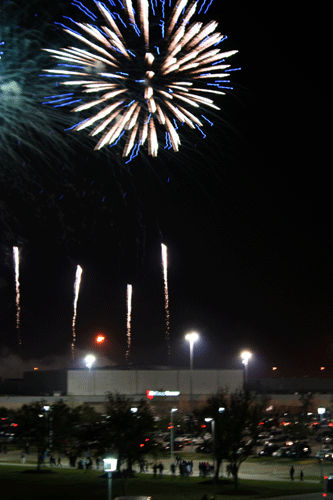For Thursday’s class, we read the first part of this book entitled THE POWER OF PHOTOGRAPHY: How Photographs Changed Our Lives–which to me seemed an overly dramatic, slightly hyperbolic title. And then I actually read the assignment, and thought to myself, well, damn, the title was appropriate after all. In the grand scheme of things, it seems that photography has lost a tiny bit of its power in the face of image oversaturation, but historically, it’s catalyzed some fairly [understatement] important events and will no doubt continue to do so. Someone in class pointed out that despite video being the apparently more advanced technology, people tend to remember events in still images–the scene of the Vietnam execution photo was also videotaped, but nobody remembers that footage. They remember the photograph. It’ll be interesting to see if YouTube and its video clip database changes this.
Because I am a layout nerd, I was also very impressed with the design of the book; it wins top points for effectiveness in conveying a message. Most books are set up so that the text and its related visuals are all on the same page. Your eye goes straight to the photo, reads the caption, and only then moves on to read the text. There was some of this typical setup in the book, but not where the author wanted to drive home a point; namely, the story about the photographs of Civil War POWs in prison. I didn’t have any background at all on this story (which is ironic, because I actually took a Civil-War-only class in high school…but we never talked about prisoner treatment), and had never even considered the state of POWs. Anyway, the piece detailed an image propaganda campaign fueled against the Southern prisons (no matter that the conditions of Union prisons were no better) by the POW photographs of starving, wasting-away, skeleton Union soldiers that came out after the war was over. The only person executed for war crimes after the Civil War was the warden of Andersonville (GA) prison, Henry Wirz–who was condemened almost entirely on the basis of the images.
So you’re reading along, kind of distracted by this new information, and having to imagine for yourself what these pictures must have looked like–because these pages are all text–and you think you have a pretty good image in your head. Okay, you think, let’s read some more about the power of photography. And you turn the page, where you are confronted with a reproduction of this photo, which is appalling and horrifying, it’s like nothing you could have ever possibly imagined, and then you have to spend a wrenching moment convincing yourself that yes, that person is really alive. But although that photo would be a gutcheck regardless of its context, the fact that a mental image was already there, created by the text of previous pages and then completely blown out of the water by the real photograph…it somehow forces the message in a way that would be impossible if the image and text were on the same page. It’s a very subtle, yet very effective, decision on the part of the book designers.
Another interesting fact from class: The Earthrise photo taken by the Apollo 8 expedition (it took me a second to realize that we’re only had space images of Earth, in its ‘natural habitat,’ if you will, for 47 years. Forty-seven years! That’s peanuts) is always presented in landscape format, with a horizon. But in the house of the astronaut who took the photo, it hangs vertically, in portrait format. It makes perfect sense, since the guy was in orbit at the time, but who would ever think of such a detail? Every book I’ve ever seen that picture in places it horizontally, to mimic the sunrise and fully create that metaphor. When I am settled enough to start filling my house with giant photo reproductions, I’m hanging my copy of the Earthrise the way it was originally seen.
 For this week’s assignment, we had to find two images from a magazine (one in which the lighting contributed to the overall mood of the photo, and one in which we wanted to know how exactly the lighting was done) and photograph them using the copy stand. We also had to ‘finish the roll’ (in film terms) of images–the catch being we had to keep the white balance set to Tungsten.
For this week’s assignment, we had to find two images from a magazine (one in which the lighting contributed to the overall mood of the photo, and one in which we wanted to know how exactly the lighting was done) and photograph them using the copy stand. We also had to ‘finish the roll’ (in film terms) of images–the catch being we had to keep the white balance set to Tungsten.
 Photos (c) Carsten Peter; National Geographic, 11/2008
Photos (c) Carsten Peter; National Geographic, 11/2008
